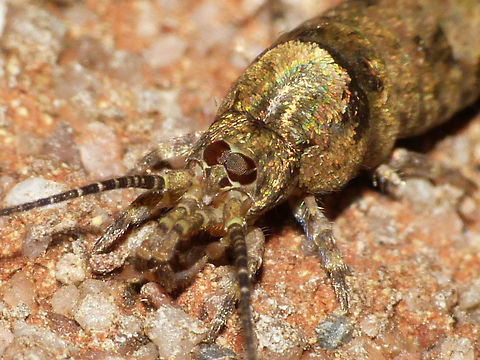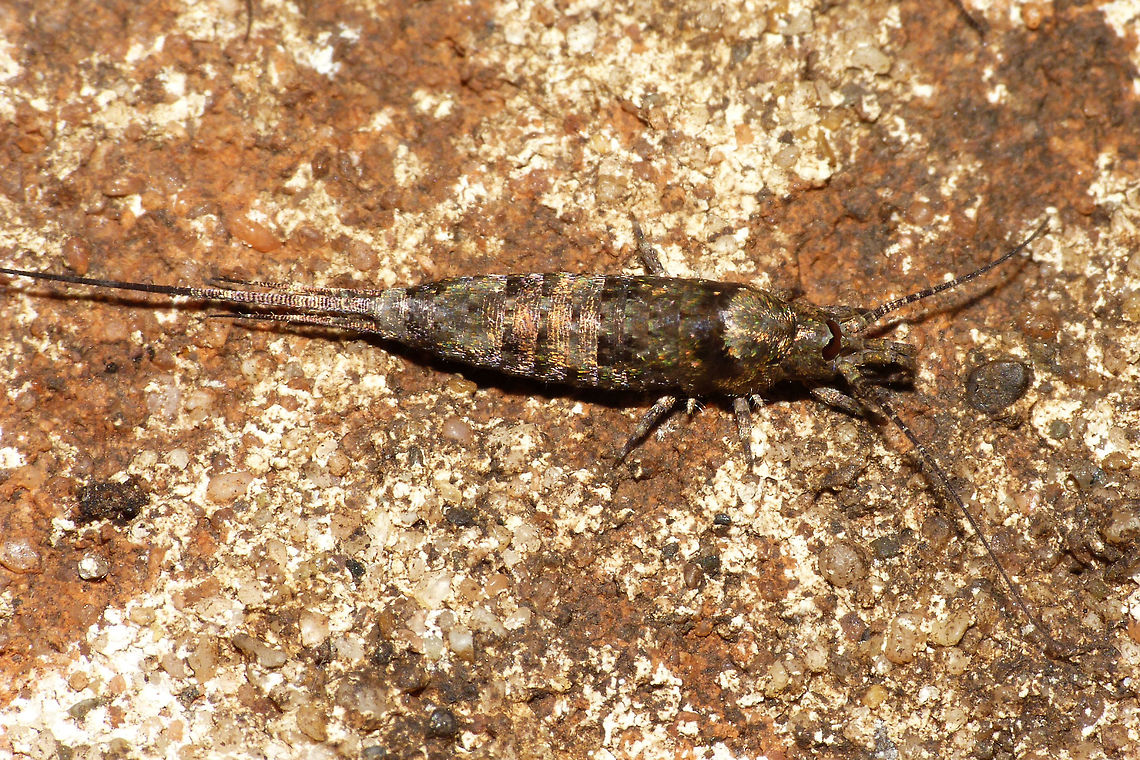
Trigoniophthalmus alternatus is a species of bristletail native to Europe, Northern Asia (excluding China) and introduced in North America.
Similar species: Jumping Bristletails
By Pudding4brains
Public Domain
Uploaded Nov 23, 2016. Captured in Ooijse Bandijk 5-9, 6576 JC Ooij, Netherlands.


comments (4)
Note however that at this site there is a population on about 5-10 yards of coastline and very similar spots nearby, further along the river don't have them.
But others have found them at less littoral sites in the Netherlands too, just like my French finds.
Not many people record these, but that is probably not so much due to them being very rare but more due to them being quite inconspicuous, mostly hiding under rocks, launching themselves off when the rock is turned ("jumping" bristletails!) much like Collembola would (but by another mechanism) and by generally having excellent camouflage on the surfaces they frequent. I have often been staring at a rock for a while only to notice the critter when it starts moving - more often than not involving jumping away and hence loosing track of it.
Here are some observations for the Netherlands: http://waarneming.nl/soort/maps/27223?from=1900-01-01
There are more sites known for these, but the few people who study them most do not record them on waarneming but in their private systems. A publication on the distribution has been "promised' by them for years now, but they have other things to work on too, or so it would seem ;o)
Here is a Dutch text I wrote up on them, explaining a little more: http://waarneming.nl/soort/info/27223?lang=nl
The other Dutch species have slightly different preferences, but generally areas with a lot of "rocks" offer good chances.
The easiest species to find must be Petrobius brevistyilis I would think. Generally any spot along the coast where there is rock-like substrate (huge concrete cubes or a stone quay etc will do fine also. For example you will find them all over the place in the coastline around Scheveningen harbour, especially along the south side of the harbour exit. Sometimes thousands of exuviae from moulting are attached to the walls of the quay. Like so: http://waarneming.nl/waarneming/view/44779148
Good luck hunting! :o) Posted 9 years ago, modified 9 years ago